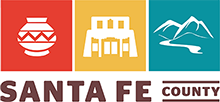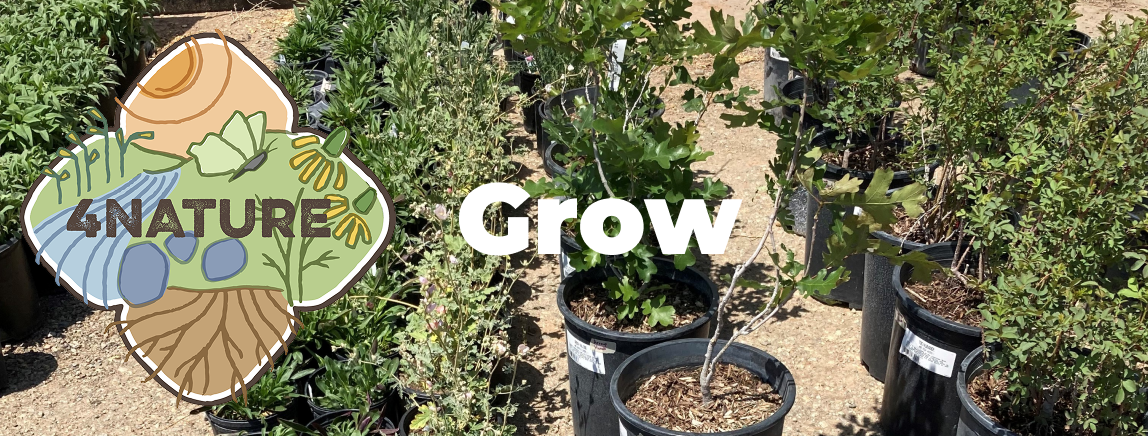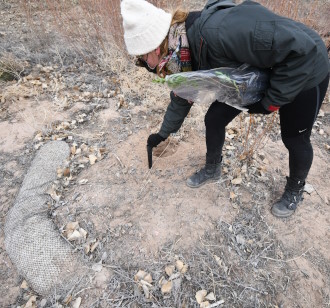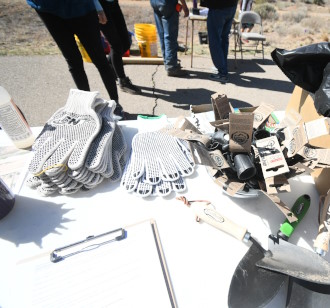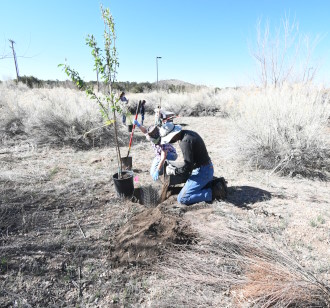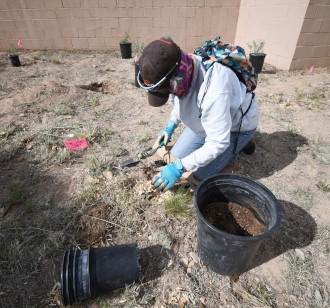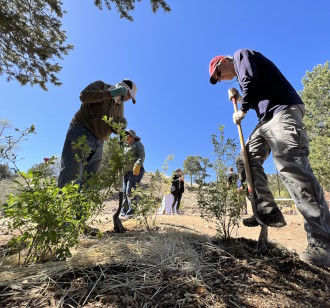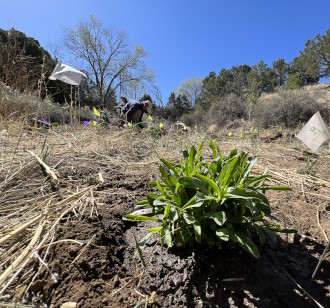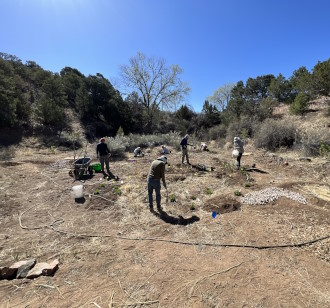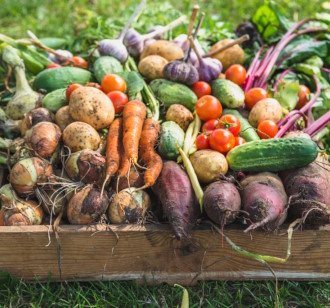Grow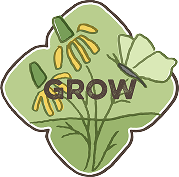
Biodiversity and Canopy
- Pollinators
- Trees
- Crop covers & rotational grazing
- Agriculture
Pollinators and biodiversity:
New Mexico boasts over 2,000 pollinator species which need habitat and pollen to survive, and as a beneficial ecosystem service, then pass it forward by providing the pollination for our food! Each third bite we eat is due to the hard work of hundreds of butterfly species, over a thousand bee species, moths, beetles, flies, wasps, bats and hummingbirds. These important pollinators also sustain our ecosystems and produce our natural resources by helping plants reproduce. Over 80% of flowering plants require pollination services. By planting a pollinator habitat, stewards beautify their spaces while increasing food production, air quality, soil quality, biodiversity, and biological control of “pest” insects!
Biodiversity is essential to maintain the ecosystem services that our community relies upon. Healthy and thriving, biodiverse rural landscapes are vital for increasing resiliency through the mitigation of destructive impacts which result in habitat loss caused by extreme weather events and soil depletion.
Services provided by pollinators, water scrubbing, and carbon storage all team up to incorporate the solutions needed for healthier environments to include clean air, healthy food, and clean water. Species extinction is accelerating at an unprecedented rate and will have grave impacts on communities, due to human land use changes, exploitation, invasive species encroachment, pollution, and climate change. Under this focus area, the County will aim to protect and restore biodiversity in its local ecosystems in order to increase adaptability and resiliency and carbon sequestration in the face of these challenges.
Conserve and preserve existing habitat
Level 1
30% of plantable space, a healthy and biodiverse ecosystem. Accomplishment of 60 point score on best practices check list items of native plantings, canopy, land stewardship and firescaping.
Level 2
50% of plantable space, a healthy and biodiverse ecosystem. Accomplishment of 75 point score on best practices check list items of native plantings, canopy, land stewardship and firescaping with an average of one native plant per square foot, and minimum of ten native species.
Level 3
70% of plantable space, a healthy and biodiverse ecosystem. Accomplishment of 90 point score on best practices check list items of native plantings, canopy, land stewardship and firescaping with an average of one native plant per square foot and eleven+ native species.
